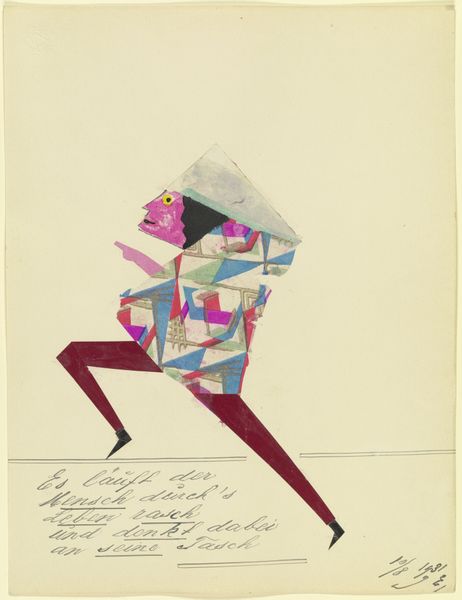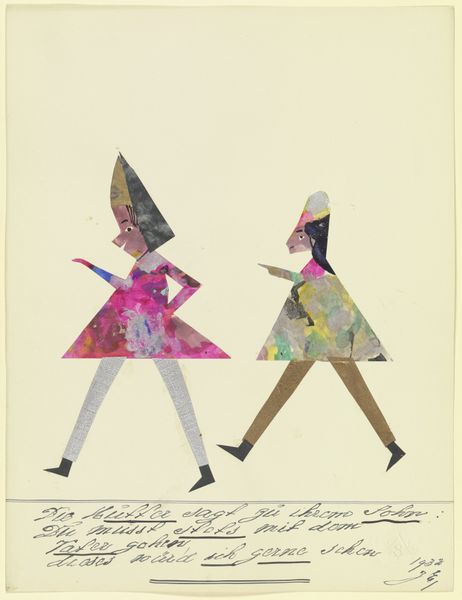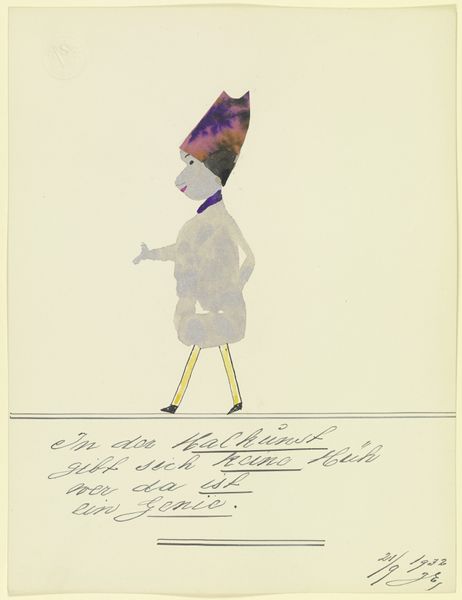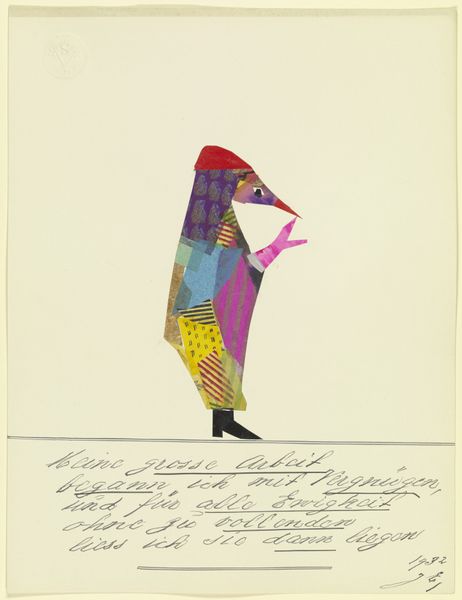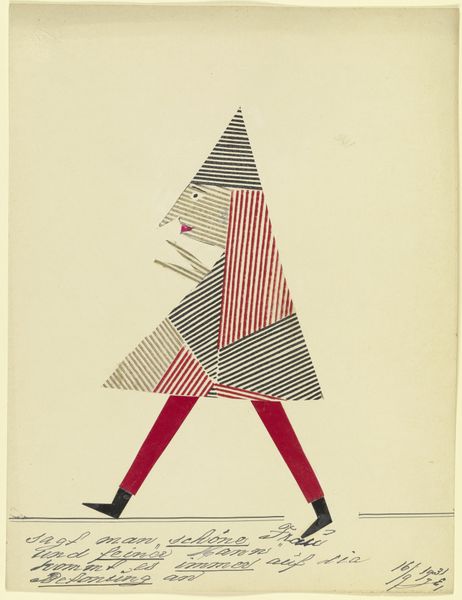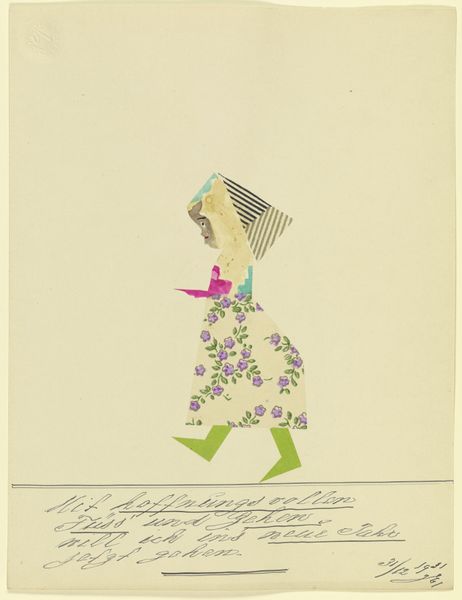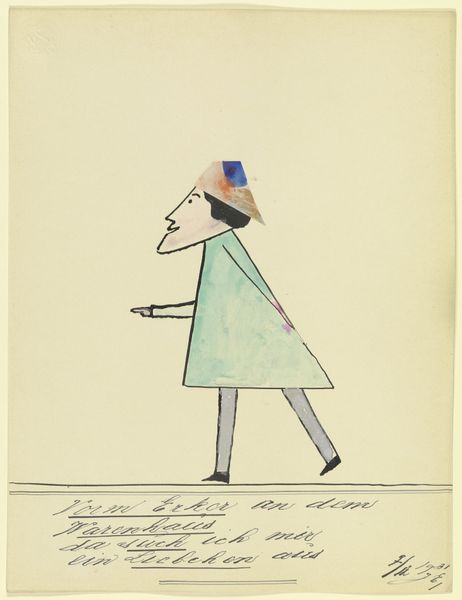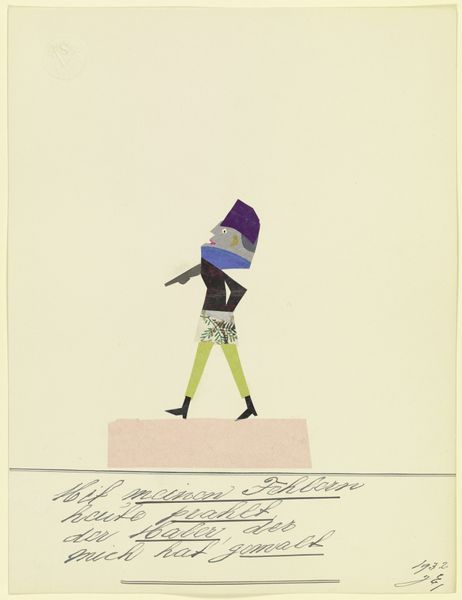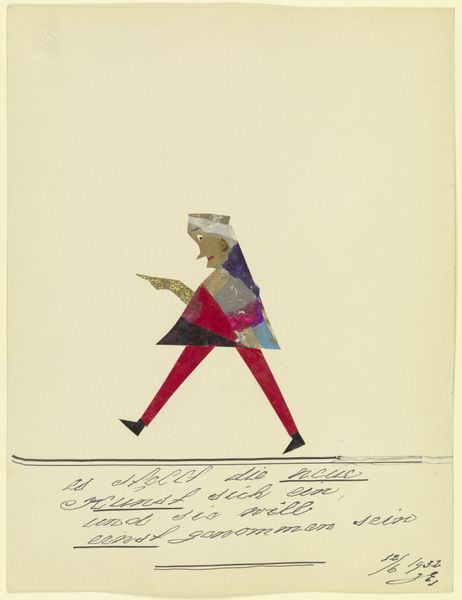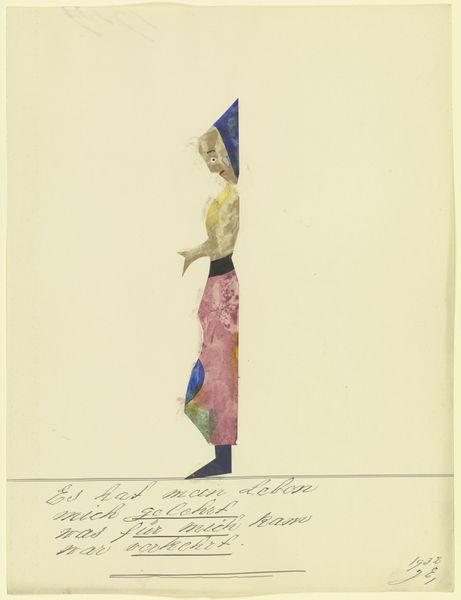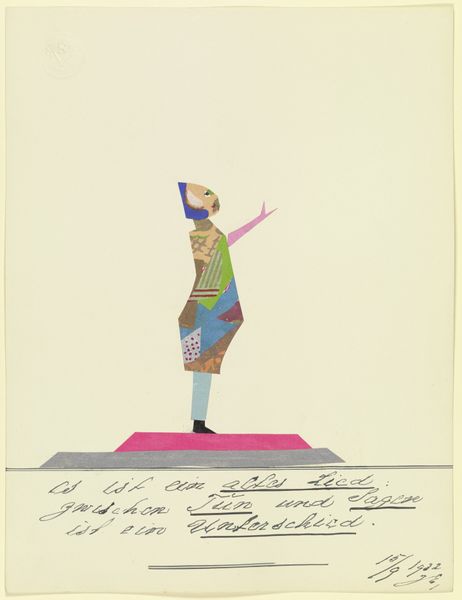
Copyright: Public Domain
Curator: The work before us, "17533 ('Bei der Erbschaft war ich nicht begehrt …')" from 1932 by John Elsas, utilizes a fascinating collage and gouache technique on paper. What strikes you most about it? Editor: The figure is quite striking. The mismatched fabrics and the almost cartoonish quality gives it a kind of offbeat, melancholic feel. What can you tell me about the social context in which Elsas created this work? Curator: Well, it's crucial to understand this piece through the lens of German Expressionism and the socio-political turmoil of the Weimar Republic. The chaotic composition and the figure's dejected posture – as reflected in the text "In the inheritance, I was not desired" – speaks volumes about marginalization. How do you see identity being explored here, through materials and form? Editor: The use of seemingly random scraps feels almost defiant, as if refusing to conform to traditional notions of portraiture, or even societal expectations. Do you think that might also be linked to his identity as a Jewish man in Germany at this time? Curator: Absolutely. His identity as a German Jewish man undoubtedly shaped his artistic perspective. This work becomes a poignant commentary on exclusion and the fragmentation of self that often accompanies oppression. This use of disparate materials can also reflect a wider deconstruction of national and social identity. Consider the use of clothing patterns—what kind of "belonging" are they intimating and then denying? Editor: It is hard not to interpret a political commentary when observing how this walking man cobbles together mismatched rags as it protests abandonment, it suggests someone unwanted, and of course with Nazi terror rising, there is so much to unpack in its potential meanings about exclusion. Curator: Indeed. Understanding Elsas’ work necessitates acknowledging the complex intersection of personal experience and collective history. What have you learned about how political marginalization influences art? Editor: I've gained a much deeper appreciation for the role of art as a vehicle for voicing social and political anxieties, particularly during times of immense upheaval. Curator: And how vital it is to contextualize such works within the power structures and social norms of their time, to really hear the artist's voice.
Comments
No comments
Be the first to comment and join the conversation on the ultimate creative platform.
